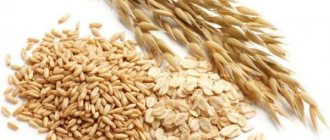Gastritis is one of the most serious diseases of the digestive system , which is accompanied by an inflammatory process that affects the mucous tissue of the stomach. The pathology is expressed in the form of painful cramps in the abdomen, nausea, flatulence, and bouts of vomiting.
To reduce the aggressive effect on the mucous membrane of the digestive tract, a diet is used that involves excluding many tasty foods from the diet. It is not at all surprising that among many patients the question arises: is it possible to eat cheese for gastritis?
Composition and beneficial properties
Cheese is a dairy product that is beloved by many adults and children .
It is considered not only tasty, but also an extremely healthy product, which is available on supermarket shelves in many forms. Hard, sausage, processed, blue cheese - each of them has its own characteristic taste characteristics and beneficial properties.
The main benefit of cheeses lies in their composition , which includes the following components:
- Vitamins of group A, B, C, D, E, PP, K.
- Microelements - calcium, potassium, sodium, magnesium, manganese, iron, zinc, copper, sulfur, phosphorus.
- Amino acids.
- Milk fat.
When gastritis worsens, any type of cheese is strictly prohibited. During this period, they should be abandoned, like most other products. The best option is therapeutic fasting for 1-3 days.
The consumption of cheeses is permitted only during the period of remission . The method of consumption and the recommended amount of the dairy product depends on the form of the disease and the type of cheese.
On our website: Is it possible to eat melon with gastritis?
Blue cheese
For gastritis, blue cheese can be consumed under two conditions: freshness and the presence of exclusively blue mold. The delicacy should have a subtle mushroom smell, a uniform structure and be soft to the touch. The main indicator of product spoilage is the presence of an ammonia odor. Check the integrity of the packaging, check the production date and storage conditions.
Cheese contains essential enzymes and bacteria that have a positive effect on digestion in the stomach and duodenum. Thanks to the structure and composition of the product, beneficial substances reach organ tissues in the required quantities.
Is it possible to eat cheese if you have gastritis?
Our expert answers the question.
Expert opinion
Irina Vasilievna
Practicing gastroenterologist
The introduction of cheese into the diet is recommended exclusively during remission . During an attack of acute gastritis or an exacerbation of the chronic form of the disease, you should stop eating hard or processed cheese.
Many gastroenterologists advise their patients to completely abstain from any food for 2-3 days, drink only a sufficient amount of liquid with regular crackers.
Already 4-5 days after an exacerbation, you are allowed to gradually introduce food into your diet - for example, cheese.
At the initial stages, it is recommended to use it grated or cut into thin slices. It is best to eat lightly salted and mild cheeses with a minimum level of fat content. In no case should you add cheeses with a high percentage of fat content to your food, as this can have the most unpleasant consequences for the human body:
- Attacks of nausea and vomiting.
- Fermentation in the digestive tract.
- Bloating.
- Pain in the stomach area of an acute, cutting nature.
- Unpleasant aftertaste in the mouth, heartburn.
As we can conclude, eating cheese for gastritis should be approached with extreme caution . Despite all its numerous beneficial properties, the dairy product can place increased stress on the digestive organs, which is completely undesirable for the inflamed gastric mucosa.
Permitted varieties
Today, there are a huge number of cheeses on supermarket shelves that attract the attention of buyers with their attractive appearance and amazing aroma.
Hard cheese - approved for consumption by people who have gastritis with low or high acidity levels. It is best to eat a product with a fresh taste that does not have a smoky aftertaste. The optimal way to use it is to grate the cheese or cut it into thin slices.
Blue cheese is one of the healthiest varieties, which, due to its rich content of beneficial lactobacilli, has a positive effect on the digestive system. Normalizes the condition of the mucous membrane and accelerates the healing of its damaged areas.
Soft cheeses - Mozzarella, Ricotta, Mascarpone. They do not contain spices or chemical additives; they gently envelop the gastric mucosa, creating a special protective film on its surface.
Even though these cheeses are allowed for gastritis, the amount of product consumed should be minimal.
Prohibited species
Expert opinion
Irina Vasilievna
Practicing gastroenterologist
People who have gastritis are strictly not recommended to consume any types of cheese that contain herbs and spices.
This stimulates increased production of stomach acid, which is extremely undesirable for diseases of the digestive system. The list of prohibited products includes the following types of cheese:
- Cheese cheese - its sourish taste has an irritating effect on the stomach, contributing to the exacerbation of gastritis.
- Sausage cheese - more often than not, during the smoking process, manufacturers use special chemicals that enhance the taste of the product.
- Suluguni is prepared by smoking, so it is highly not recommended for gastritis.
- Processed cheese - this product contains flavorings, preservatives and taste enhancers, which help increase the level of gastric juice.
- Goat cheese - similar to feta cheese, has a sour taste and has an aggressive effect on the condition of the gastric mucosa.
For gastritis with a low or high level of acidity, eating sour, salty, peppery, spicy cheeses is extremely undesirable , as they place an increased burden on the inflamed gastric mucosa.
Dairy products with a high percentage of fat content have a similar effect.
On our website: What kind of bread can you eat if you have gastritis?
What types of cheeses should you not eat?
Homemade goat cheese. This healthy product is not recommended for those who have increased diastasis. Agree that few people will refuse a sandwich with soft cheese during breakfast.
However, people with gastrointestinal ailments have a question about whether processed cheese can be used for gastritis and ulcers. There is an opinion that the method of its production makes it possible to reduce the content of bad cholesterol in it, increasing its nutritional value. It is known that the cheese product is more easily absorbed by the body, but has a significant drawback.
Due to the high content of salt and spices, as well as citric acid, processed cheese should not be eaten if you have a stomach ulcer, pancreatitis or other gastrointestinal diseases. The product is especially dangerous for gastritis with high stomach acidity. Doctors strongly advise giving up processed cheese if helicobacteriosis develops.
Sausage cheese should be excluded from the diet for diseases such as ulcers and gastritis. It is nothing more than smoked processed cheese. It is characterized by a high content of sodium and various preservatives, the excessive consumption of which leads to a deterioration in the patient’s condition.
Another type of cheese that should not be eaten if you have gastritis is Suluguni. This product is made by smoking with the addition of a large amount of salt, so even a small piece of it can cause an exacerbation of the disease.
It is also not recommended to eat Parmesan. Although this type of cheese has virtually no contraindications, we should not forget that it is “famous” for its high content of fats and fatty acids. Also, parmesan should be excluded from the diet for those people who need to reduce their salt intake.
Due to the high content of milk fat (about 50%), it is recommended to avoid Cheddar for gastritis and peptic ulcers. In addition, it can provoke an attack of heartburn.
Unfortunately, many people suffering from gastritis do not know that some hard cheeses should not be eaten if they have gastrointestinal ailments. The fact is that Maasdam, Edam and Gouda are characterized by high fat content and have an islandy taste. The product is dangerous for people with increased secretion of hydrochloric acid.
The main recommendation that people with gastrointestinal diseases need to remember when choosing cheese: it should under no circumstances be smoked, fatty, spicy or salty. Also, avoid the cheese product - this is not real cheese, but a cheaper analogue made from vegetable fats and preservatives. You can also make your own cheese, without spices, using low-fat milk and a minimum of salt.
Selection rules
In order for cheese to bring maximum benefits to the body, it is necessary to choose it correctly.
You need to give preference to natural products. First of all, you should carefully study the label of the cheese - it should not contain pepper, spices, salt or other flavor enhancers. You need to choose fresh varieties.
Be sure to carefully read the shelf life of cheese. Even the healthiest product that has expired can cause serious harm to the human body.
Cheese is an extremely tasty and healthy product that can be consumed for gastritis with high or high acidity. But you need to be careful when choosing it, and you should also strictly limit the amount of cheese you consume.
Recommended varieties for various forms of pathology
Choosing a cheese that won't make your stomach worse can be difficult. In this matter, you should listen to the recommendations of doctors. They pay special attention to the individual level of gastric acidity in patients.
Increased acidity
Cheese for gastritis with high acidity in the stomach is allowed to be consumed only with a fat content of no more than 2%. Of the soft varieties, it is preferable to use varieties such as:
- Feta. This cheese with a fat content not exceeding 2% is produced only by the well-known brand FILA. For other manufacturers, this figure is more than 4%, which significantly increases acidity.
- Tofu. This is soy cheese made without the use of dairy components, especially goat milk. It is recognized as a worthy replacement for Feta cheese, for the production of which some manufacturers use it. The presence of goat milk in the product is contraindicated for gastritis.
- Mozzarella. Low-fat Mozzarella is a godsend for patients with gastritis. Low fat content, not exceeding 4.9 units, is very healthy and absolutely harmless.
A special variety is Ricotta. It can be called a universal soft cheese, which can be consumed even with low acidity. Using whey instead of whole milk makes it tender and healthy.
Low acidity
Almost all of the listed soft varieties can be consumed for gastritis with low acidity. In addition, it is allowed to introduce solid varieties that do not contain preservatives, flavors, or dyes.
Among hard cheeses, you should pay attention to Cheddar, produced in a low-fat version. True, low fat content does not have the best effect on taste. Another drawback is that there is almost no calcium in this cheese.
As for Parmesan, its low fat content (5.25) does not allow it to be used in food without first being melted. However, the usual option of preparing macaroni and cheese is not allowed due to the high carbohydrate level of the dish, which causes irritation of the mucous membranes.
When is cheese allowed?
In the first three days of exacerbation of gastritis, it is not recommended to eat any type of this dairy product. This refers to attacks of acute gastritis, as well as periods of complications of the chronic form of the disease. On day 4-5, experts allow you to start eating cheese. A patient with gastritis can only eat mild and unsalted cheeses with a low fat content.
At the same time, doctors advise consuming dairy products exclusively in grated form. Follow these recommendations. Within 2 weeks after getting rid of the signs of the disease, you can introduce sliced cheese into your diet.
Prohibited varieties
Many types of cheese, both soft and hard, with a high percentage of fat content are contraindicated for gastritis. Their presence in the diet for gastritis of any form is fraught with exacerbation of the pathological condition, accompanied by nausea, heaviness in the stomach and acute attacks of pain.
For example, with any level of acidity in the stomach, cheeses that have undergone additional processing are strictly prohibited. They contain a high concentration of fat, contain preservatives, thickeners, hot spices and other components that irritate the mucous tissue of the stomach. These include:
- Suluguni,
- sausage cheese,
- processed cream cheese,
- cheeses made from goat's milk.
Due to the content of citric acid and other harmful components in Suluguni sausage cheese and braids, they pose a serious threat to the inflamed areas of the gastric mucosa. In addition, these types of cheese are characterized by a high fat content (especially goat cheese), which equally negatively affects not only the state of the gastrointestinal tract, but also other organs and systems.
Careful attention to the choice of cheese, its composition, compliance with shelf life and consumption of it in reasonable quantities will help to avoid exacerbation of gastritis and the pathology becoming chronic.







